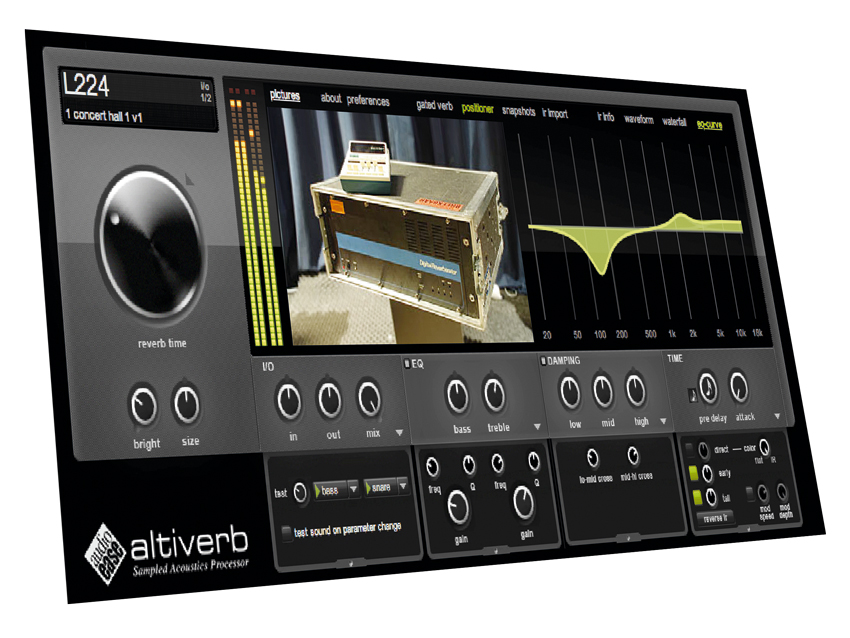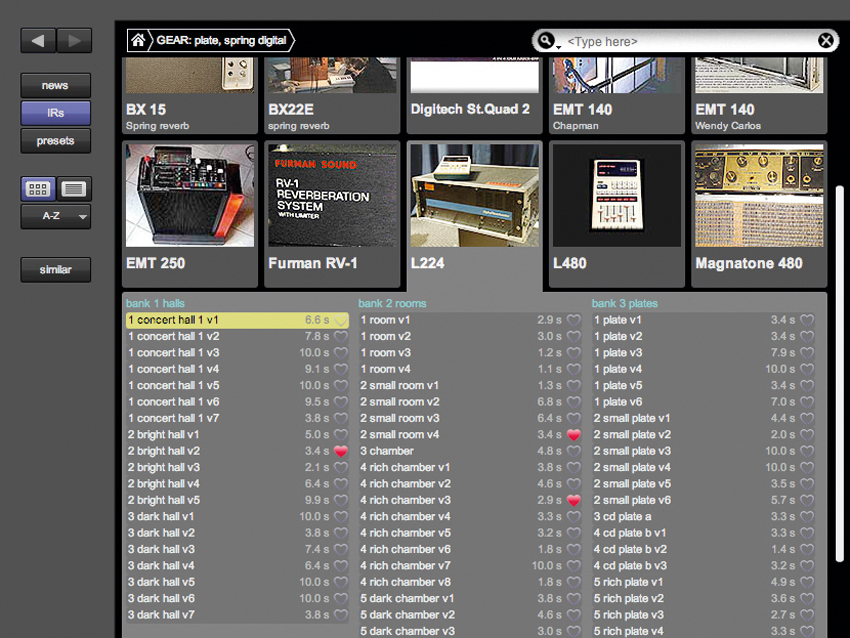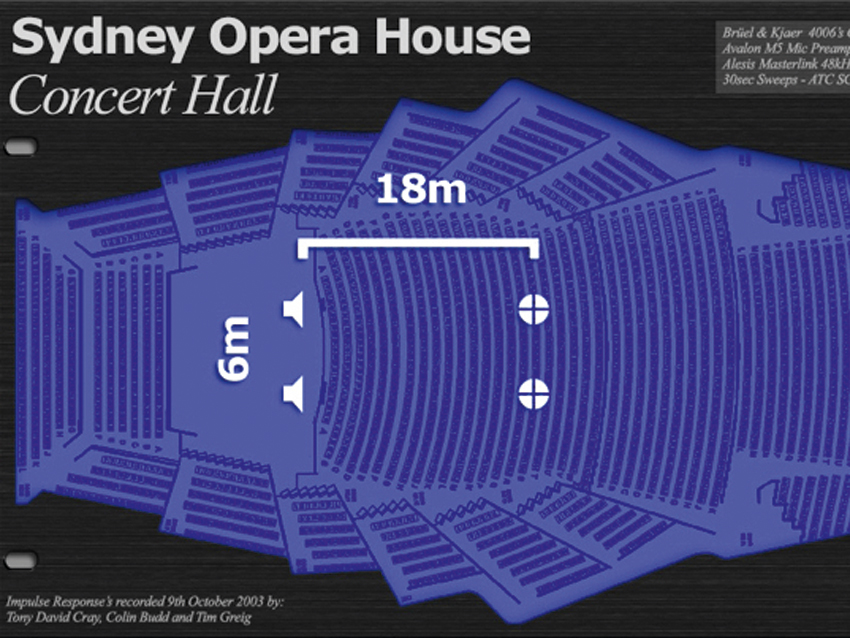MusicRadar Verdict
Altiverb 7 looks and sounds better than ever. It's the best convolution reverb plug money can buy.
Pros
- +
Unparalleled convolution solution.
Cons
- -
Less than essential as an upgrade.
MusicRadar's got your back

Audio Ease Altiverb 7

Audio Ease Altiverb 7

Audio Ease Altiverb 7
Altiverb uses impulse responses (IRs) to apply the sonic characteristics of real acoustic spaces and studio hardware to the input signal.
An impulse response is a sample of the reverb generated by the space/gear in question in response to a particular sound - a sine wave sweep in the case of Altiverb's IR library. By convolving (combining) this impulse response with the audio input, incredibly authentic 'real-world' reverb is simulated. That, in a nutshell, is the Altiverb reverb plugin.
"Altiverb 7 sounds every bit as beautiful as Altiverb 6 - often more so, thanks to the algorithmic reverb layer, gate and tempo sync."
Lucky 7
Altiverb 7, released at the end of last year (almost five years after Altiverb 6!), brings a moderate number of functional improvements, as well as an overhaul of the UI. Gone is the faux rack-mount view of old, replaced by a simpler, more contemporary layout that keeps the fundamental controls always in view and hides the 'deeper' ones away in slide-down drawers.
These actually turn out to be rather pointless, since the blank area of the interface into which they slide is no less space-occupying without them, so you might as well just leave them all open.
More importantly, IRs and presets are now navigated using the new picture browser, a resizable pop-out window that boasts far more functionality than its text-based predecessor. Altiverb is famous for the flat and 'VR' images (interactive 360° panoramics, essentially) that accompany each IR, and now those images are used throughout the browser as well as in the main display when an IR is actually loaded. It's not a huge deal, but it certainly makes browser navigation more immediate and, well, fun, if that matters.
IRs can now also be searched by name or keyword ('large', 'metal', 'church', 'plate', etc), organised by size and marked as Favourites; and the new Similar button instantly filters down to all IRs with similar characteristics to the currently selected one. IRs now load more quickly than before, too. Presets are also accessed via the browser, although they can't be searched, oddly.
Want all the hottest music and gear news, reviews, deals, features and more, direct to your inbox? Sign up here.
Full auto
The second headline feature, aimed at the post-production market, is the ability to automate IR selection. Previously, a snapshot system was used to switch between IRs on the fly, but the new system is somewhat easier, with IR Automation appearing as an automatable parameter in your host.
Sadly, 'your host' doesn't include Ableton Live, thanks to its teeth-clenchingly frustrating inability to automate anything it can't 'see' in the GUI - good job the old snapshot system is still in place, too, then.
Owing to the fact that there's "a lot of trickery going on behind the scenes", IR Automation changes have to be recorded in real time and can't be drawn or edited by hand. The changes themselves don't happen immediately, either, so this particular feature is more applicable to post production than music.
That aside, it works fine, although punching in and out of sections of the envelope to overwrite them causes problems. Altiverb is unable to resolve the overwrites properly, soit seems that each automation envelope has to be created in one pass.
And the sound?
Intriguingly, Altiverb now includes a fully synthesised algorithmic 'secondary' reverb for adding top-end sheen. Comprising just a depth control (Bright), this does an impressive job of boosting high-frequency response and, consequently, brightness.
There's also now a gate onboard, the closing time of which can be set in host-synced beat divisions or seconds/milliseconds - as, indeed, can the lengths of the newly simplified Pre-Delay and Attack parameters.
Applying EQ has been made more intuitive by the addition of an interactive graphical EQ curve, while the new modulation controls (Speed and Depth) enable the subtle randomising of early reflections in order to add a bit of natural variation to the reverb and 'cloud' slightly out of tune notes. And the improved Positioner now gives 10 times more stage space for extremely flexible source positioning within the virtual environment, both left-to-right and front-to-back.
Altiverb has always had the ability to load any audio file as an IR, but now this can be done via drag and drop - though the results vary in terms of usability.
Acting on impulse
Altiverb 7's library of IRs weighs in at 3.4GB and comprises a massive collection of spaces and devices. Audio Ease has sampled some of the world's most acoustically impressive structures, a range of classic and not-so-classic hardware, over 20 car interiors, tons of 'domestic' and public spaces and a variety of off-the-wall chambers.
The full list is on the website - it makes fascinating reading and really gets across the passion that Audio Ease has for making its IR library ever more powerful, versatile and quirky.
You can also make your own IRs by firing a suitable sound into the space or through the hardware to be captured, recording the result and dragging it into the Altiverb interface. Full instructions and a variety of source sounds are on the Audio Ease site.
The more things change…
Altiverb 7 sounds every bit as beautiful as Altiverb 6 - often more so, thanks to the algorithmic reverb layer, gate and tempo sync. The new interface isn't dramatically easier to navigate and use than before, but it is cleaner. The pop-out browser, however, is great, although 1440x900 laptop users will find themselves opening and closing it constantly.
So, with version 7, Altiverb steals the convolution crown from… Altiverb 6! It's quick, unfussy and always sounds incredible, and that remit of providing stunning real-world ambiences and simulations of classic gear remains as solidly upheld as ever.
It's still not really aimed at 'electronic' producers, but if you're looking to put a guitar, piano, drum kit or singer in a totally convincing hall, church, studio, stadium, club or, er, bucket, there's simply no finer solution - we can't recommend it enough.
Upgraders from any Altiverb versions that are pre-2010, however, are being asked to drop a pretty serious 159 euro on what we wouldn't describe as an 'essential' upgrade - and one that in no way renders its predecessor anywhere near obsolete. That'll be a tough call for some.
A music and technology journalist of over 30 years professional experience, Ronan Macdonald began his career on UK drummer’s bible, Rhythm, before moving to the world’s leading music software magazine, Computer Music, of which he was editor for over a decade. He’s also written for many other titles, including Future Music, Guitarist, The Mix, Hip-Hop Connection and Mac Format; written and edited several books, including the first edition of Billboard’s Home Recording Handbook and Mixing For Computer Musicians; and worked as an editorial consultant and media producer for a broad range of music technology companies.
